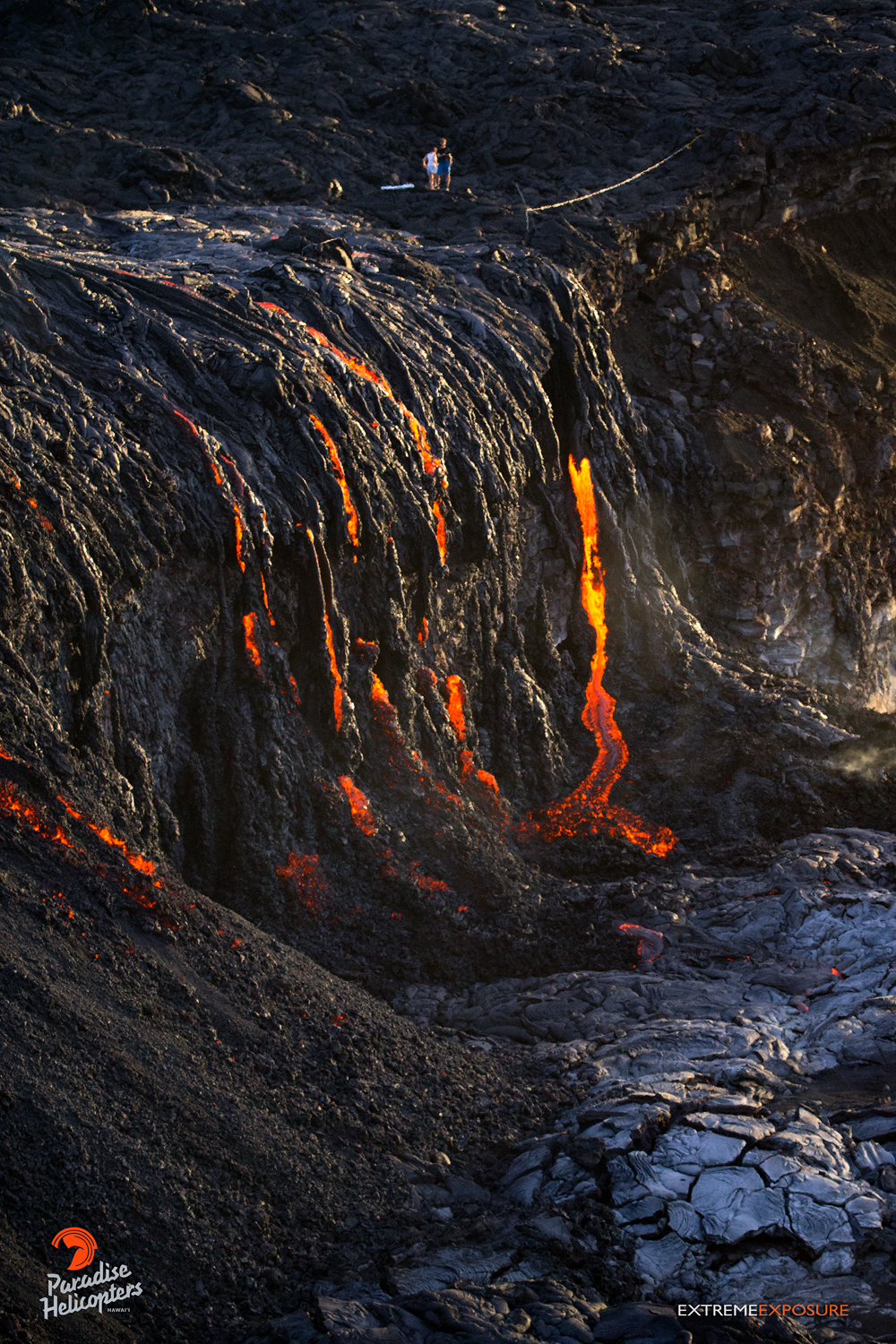VIDEO: Numerous Kīlauea Lava Fingers Enter Ocean
Above: Clip from Tropical Visions Video, partner of Paradise Helicopters, Aug. 11, 2016 flyover.
A new ocean entry of Kīlauea’s 61G lava flow has developed about a quarter mile from the first at Kamokuna In Hawai‘i Volcanoes National Park, according to an email sent to Big Island Now by photographer Mike Kalber of Tropical Visions Video, partner of Paradise Helicopters.
“It is quite robust and has already formed a considerable lava bench,” Kalber said. “Numerous fingers of a‘a lava dripped over the coast cliffs and dozens pahoehoe flows entered the water. Several pahoehoe outbreaks were noted on the coastal plain, both above and below the access road, which Pele has now crossed in three places.
A third ocean entry will probably develop over the next day or two, Kalber added.
“We also spotted several skylights—windows that allow us to peer inside to see lava flowing below,” Kalber said. “These tubes are feeding the flows downslope.”
The Paradise Helicopter crew reported that the eastern delta is slowly growing, while a new one has formed approximately one-quarter mile to the west. Several surface breakouts in the vicinity could potentially mean there’s more to follow.
Meanwhile, several breakouts were also visible near Pulama Pali, likely due to the Kilauea’s inflation resulting in increased volume.
USGS Hawaiian Volcanoes Observatory confirmed Paradise Helicopters’ report on Friday, Aug. 12, in a 9:35 a.m. website posting, adding that a small delta collapsed occurred Tuesday afternoon.
“Visitors continue to access the lava flows by helicopter, boat and on foot, via the newly built access road,” Kalber said. “Hikers can make the approximately eight-mile roundtrip trek from either the Kalapana or HVNP side.
CAUTION FOR LAVA VIEWERS
The USGS cautions lava visitors at the new ocean entry that there are additional significant hazards besides walking on uneven surfaces and around unstable, extremely steep sea cliffs.
Venturing too close to an ocean entry exposes you to flying debris created by the explosive interaction between lava and water.
Also, the new land created is unstable because it is built on unconsolidated lava fragments and sand.
This loose material can easily be eroded away by surf causing the new land to become unsupported and slide into the sea.
Finally, the interaction of lava with the ocean creates an acidic plume laden with fine volcanic particles that can irritate the skin, eyes, and lungs.

Multiple fingers enter the sea, creating a steaming inferno. Photo: Tropical Visions Video, partner of Paradise Helicopters.

A view of the eastern delta. Continued activity here is adding to its size. Photo: Tropical Visions Video, partner of Paradise Helicopters.

A view of the new western delta at Kamokuna. Note the three road crossings near the top of the frame. Photo: Tropical Visions Video, partner of Paradise Helicopters.

















